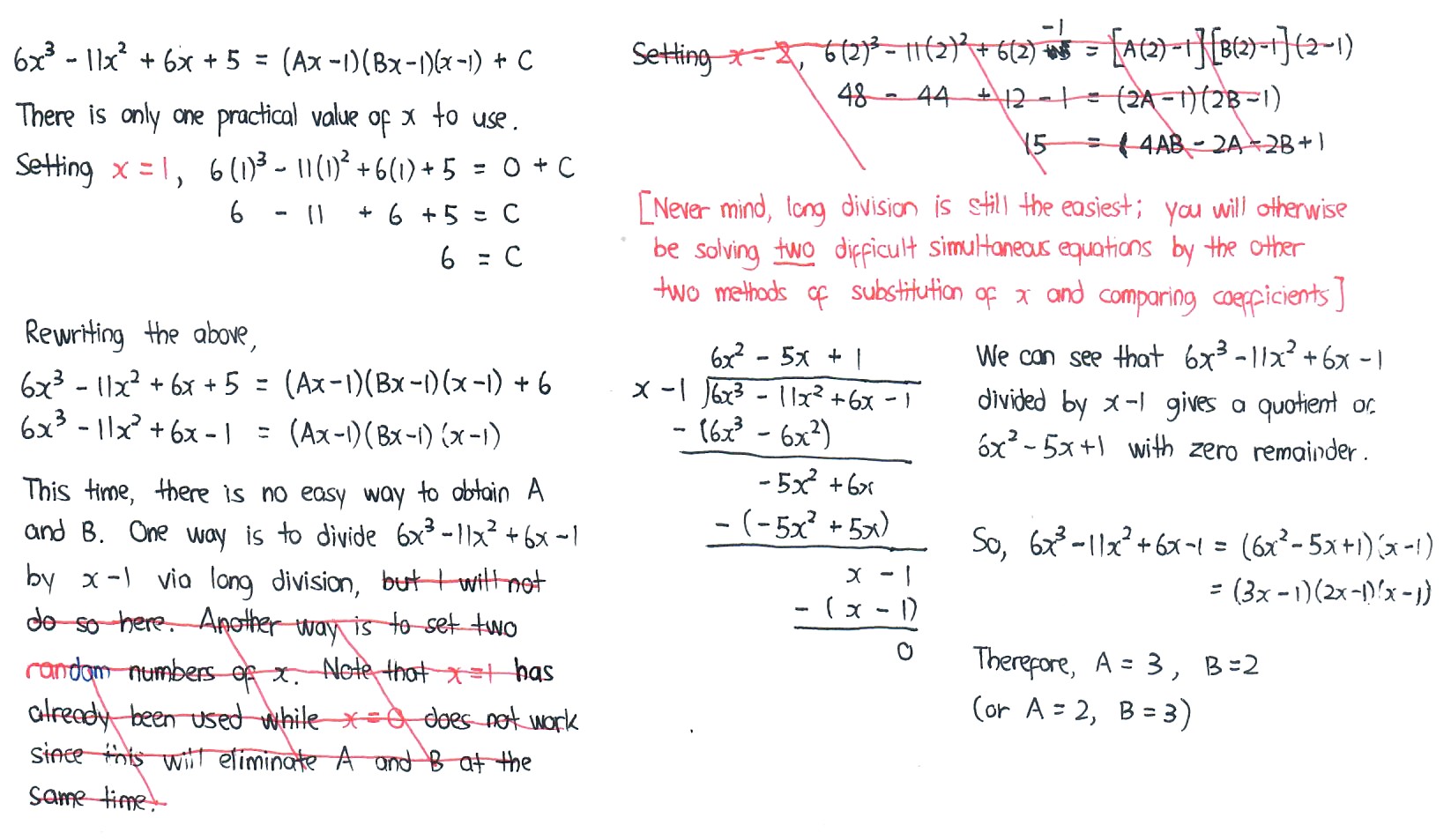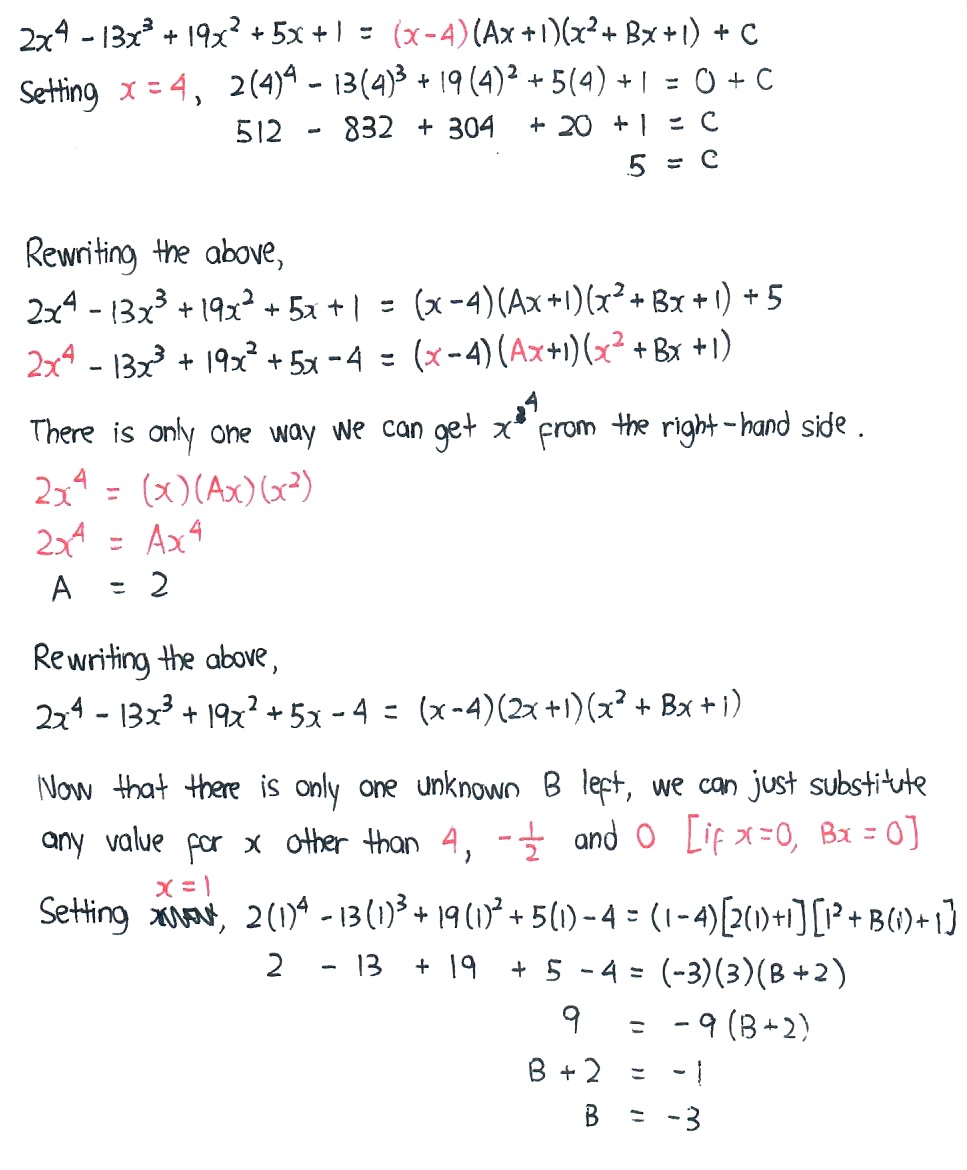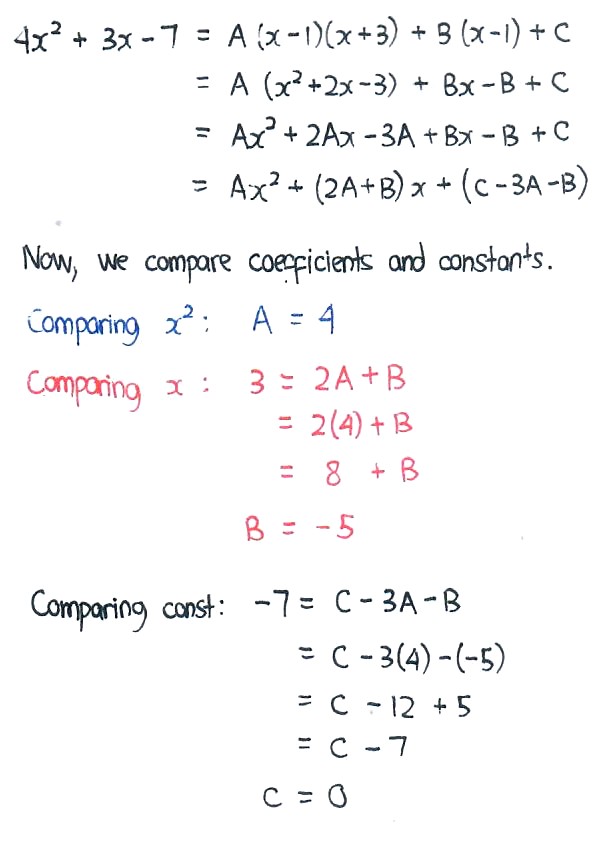Ask Singapore Homework?
Upload a photo of a Singapore homework and someone will email you the solution for free.

See 5 Answers
done
{{ upvoteCount }} Upvotes
clear
{{ downvoteCount * -1 }} Downvotes
Here is my working for part (a). I use substitution of several values of x to find the values of A, B and C. There is another way called comparing coefficients, but this is more effective only in certain situations.
Date Posted:
5 years ago
Can you show me the comparing coefficient
done
{{ upvoteCount }} Upvotes
clear
{{ downvoteCount * -1 }} Downvotes
Here is my working for part (b). I used a mix of substitution of x and comparison of coefficients to find the values of A, B and C.
Date Posted:
5 years ago
done
{{ upvoteCount }} Upvotes
clear
{{ downvoteCount * -1 }} Downvotes
Here is my working for part (c). Alas, there is no hard and fast rule on which method is the easiest. I will now do part (iv), and once done, I will show you how to compare coefficients for part (i).
Date Posted:
5 years ago
Setting x = 0 instead of x = 1 at the start may have been a slightly better choice.
done
{{ upvoteCount }} Upvotes
clear
{{ downvoteCount * -1 }} Downvotes
Here is my working for part (d). Again, the choices are highly dependent on whether there are any nice bracketed terms at the start or not and also where the unknowns are placed.
Actually, instead of setting x = 4, setting x = 0 (achieves the same effect as comparing constants) might be slightly more appealing, since anything attached to x will vanish.
Actually, instead of setting x = 4, setting x = 0 (achieves the same effect as comparing constants) might be slightly more appealing, since anything attached to x will vanish.
Date Posted:
5 years ago
done
{{ upvoteCount }} Upvotes
clear
{{ downvoteCount * -1 }} Downvotes
Here is my approach for part (a) using comparing coefficients method.
Fortunately, I obtain A from the comparison of x2 immediately.
In the most unfortunate situation, you may have three simultaneous equations with three unknowns, which can get very long (or rather, draggy) to solve.
Fortunately, I obtain A from the comparison of x2 immediately.
In the most unfortunate situation, you may have three simultaneous equations with three unknowns, which can get very long (or rather, draggy) to solve.
Date Posted:
5 years ago









